It seems like there’s an ever growing requirement for compliance training. Sarbanes-Oxley, HIPPA, COPPA, Gramm-Leach-Bliley, FCPA, OSHA…the list goes on. Luckily, the latest research* shows — and this may be surprising — that compliance training is one of the greatest drivers of workforce creativity.
At a time when employee engagement numbers are falling, and HR departments and training functions are searching for ways to drive innovation in the workplace, compliance training is a hidden tool to spark creativity at all levels of the organization. It probably happens in your organization, and you haven’t even thought about it. Haven’t you seen these scenarios?
- The executive who gets their admin to take the training for them. Great delegation skills!
- The engineer who runs the training on a second monitor so they can continue working while they click through. Multitasking!
- The financial analyst who realizes that the ‘low bandwidth, text-only’ version of the course actually is much faster because they don’t have to wait for those awful stilted videos to play. Making the most of technology!
- The marketer who jumps straight to the end of course quiz and takes it over and over again guessing the answers without really paying attention until they get them all right. Persistence!
Are these really the behaviors we want in our workforce? Then why do we keep creating terrible compliance eLearning that seems specifically designed to encourage exactly the wrong behavior? While there have been a few exceptions, most compliance training is about as boring and unenjoyable as anything out there. The annual compliance training push is as welcome as a lobotomy.
Even worse than that (if demotivated employees weren’t bad enough) it wastes millions of hours of otherwise productive time. In the US, there are roughly 80 million workers in companies larger than 1000 employees. If they take only one hour of compliance training per year, that is the equivalent of 40,000 YEARS of lost work time. Wouldn’t it be great if there was a way to cut that number in at least half, AND make the training engaging at the same time? Luckily there is.
Adaptive Learning is a type of eLearning that combines the latest research in cognitive science and artificial intelligence to eliminate redundant training and engage the learner. The adaptive engine adjusts in real-time to the current state knowledge of the learner, delivering only what is needed in a highly interactive and engaging way.
Isn’t the purpose of compliance training to enable the employee to recognize situations that carry significant risk, and to teach what to do in those situations? Shouldn’t the focus be on ensuring mastery of those skills as efficiently as possible, rather than on removing the ability to fast forward a video to ensure someone has to sit through something they already know because they’ve been through it for the last four years?
Using formative assessment, adaptive learning can ensure mastery of compliance subjects in as little as one-sixth of the time of traditional learning. The approach also results in ‘analytics-for-free’: the question-based teaching approach generates huge amounts of granular data that eliminate the need for separate quizzes or assessments, and provide highly reliable, objective measures of proficiency and mastery.
And because of the highly interactive and reactive nature of the approach, employees are highly engaged in the content and see the training as valuable, rather than as something to be tolerated or worked around.
Don’t your employees deserve better than deliberate demotivation and time wasting?
Note *: By research, I mean “things that I may or may not have seen or done personally at various points in my career.”
Sources: http://dmdatabases.com/databases/business-mailing-lists/how-many-businesses





